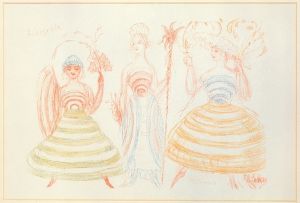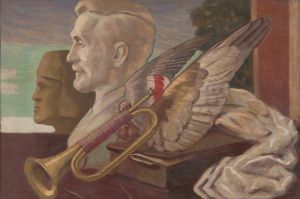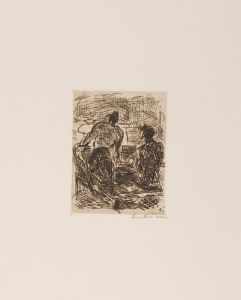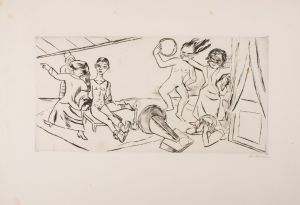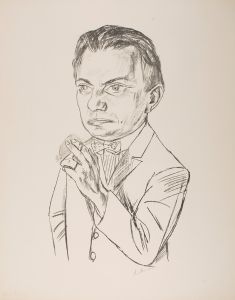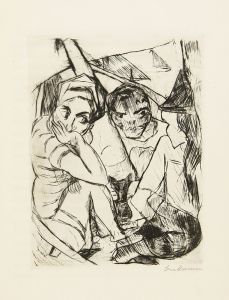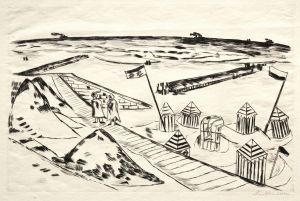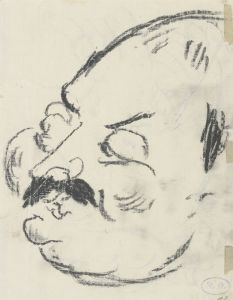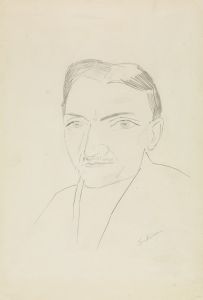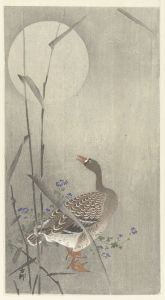
Braunes Meer mit Möwen
A hand-painted replica of Max Beckmann’s masterpiece Braunes Meer mit Möwen, meticulously crafted by professional artists to capture the true essence of the original. Each piece is created with museum-quality canvas and rare mineral pigments, carefully painted by experienced artists with delicate brushstrokes and rich, layered colors to perfectly recreate the texture of the original artwork. Unlike machine-printed reproductions, this hand-painted version brings the painting to life, infused with the artist’s emotions and skill in every stroke. Whether for personal collection or home decoration, it instantly elevates the artistic atmosphere of any space.
"Braunes Meer mit Möwen" (Brown Sea with Seagulls) is a painting by the renowned German artist Max Beckmann, who is widely recognized for his contributions to the Expressionist movement and later, the New Objectivity (Neue Sachlichkeit) movement in art. Beckmann's work is characterized by its bold use of color, complex compositions, and often, a deep exploration of the human condition and societal themes.
Max Beckmann was born on February 12, 1884, in Leipzig, Germany, and his career spanned several tumultuous periods in European history, including both World Wars. His experiences during these times significantly influenced his artistic output. Beckmann's style evolved from Impressionism to a more personal form of Expressionism, and he is often associated with the New Objectivity movement, which sought to present a more realistic and sometimes critical view of the world.
"Braunes Meer mit Möwen" is a part of Beckmann's later works, created during a period when he was living in exile. After the rise of the Nazi regime, Beckmann's art was labeled as "degenerate," and he was dismissed from his teaching position at the Städelschule in Frankfurt. In 1937, he fled to Amsterdam, where he lived for ten years before moving to the United States in 1947.
The painting depicts a seascape with a brown-hued sea, populated by seagulls. Beckmann's use of color in this work is notable; the brown tones of the sea create a somber and perhaps introspective mood, contrasting with the lively presence of the seagulls. This juxtaposition may reflect Beckmann's own experiences and emotions during his years of exile, a time marked by both personal and professional challenges.
Beckmann's seascapes often carry symbolic meanings, and while "Braunes Meer mit Möwen" does not overtly convey a specific narrative, the elements within the painting can be interpreted in various ways. The seagulls, for instance, might symbolize freedom or the passage of time, while the brown sea could represent the uncertainty and turbulence of the era in which Beckmann lived.
Throughout his career, Beckmann maintained a distinctive approach to composition, frequently employing a triptych format in his larger works. Although "Braunes Meer mit Möwen" is not a triptych, it shares the complexity and depth typical of his oeuvre. Beckmann's ability to convey profound themes through seemingly simple scenes is a testament to his skill and vision as an artist.
Max Beckmann passed away on December 27, 1950, in New York City. His legacy endures through his extensive body of work, which continues to be celebrated for its emotional depth and technical mastery. "Braunes Meer mit Möwen" remains an important piece within Beckmann's collection, offering insight into the artist's mindset during a pivotal period in his life.








